Without a doubt, C. Crane Company has become an established name in our radio community as a retailer and manufacturer that focuses on the world of broadcast listening. The company’s ads, website, and blog all promote broadcast listening as a viable and important part of our evolving media landscape. Their radio products are all designed with broadcast listening in mind.
Currently the company manufactures one of the most capable AM broadcast receivers on the market: the CCRadio-2E.
The CCRadio-2E, however, is a pricey portable at $170 US, perhaps overkill for the casual broadcast listener.
So, for those seeking a simpler broadcast receiver, C. Crane later developed the original CCRadio-EP, a bare-bones, fully analog AM/FM radio with a large backlit slide rule dial, designed for the listener who wants to “go old school” in their receiving.
The original CCRadio-EP also attracted mediumwave/AM broadcast radio listeners because it had fairly impressive performance characteristics supported by C. Crane’s patented Twin Coil Ferrite AM antenna. In many ways, the original CCRadio-EP was somewhat reminiscent of the GE Superadio.
Yet while the original CCRadio-EP has––according to C. Crane––been a popular product, because certain vital EP components are now becoming obsolete, the company has been forced to redesign it; hence the new CCRadio-EP Pro.
The CCRadio-EP Pro: A different animal
Let’s be clear, though: unlike its predecessor, the CCRadio-EP Pro is no longer a true analog set.
![]() Despite external similarities, internally this radio and its predecessor are very different receivers. Inside, the EP Pro is based on the Silicon LabsSI4734 DSP chip. Perhaps it goes without saying, but I consider the move to a chip a significant design change.
Despite external similarities, internally this radio and its predecessor are very different receivers. Inside, the EP Pro is based on the Silicon LabsSI4734 DSP chip. Perhaps it goes without saying, but I consider the move to a chip a significant design change.
In other words, much like the Degen DE321, the Degen DE32, the Tecsun R-2010D, the Kchibo KK9803 and the ShouYu SY-X5 (which I review in a shoot-out here), the CC-Radio EP Pro is a mechanically-tuned DSP receiver.
Crane kindly sent me a review sample of the new CCRadio-EP Pro. It’s important to note that the review unit came from a strictly limited first production run; the actual consumer rig’s first major production run is still a few weeks away. Thus this radio is not yet shipping.
I’ve had the CCRadio-EP Pro for a few weeks now, during which time I’ve given it a thorough evaluation. So, let’s take a close look at the CCRadio-EP Pro––first, in terms of performance.
AM Performance
Let’s face it: if you’re a radio enthusiast and reading this review, you’re likely mainly concerned with the EP Pro’s performance on the AM broadcast band. Personally speaking, that’s true for me, too.
Over the years of reviewing portable receivers of all stripes, I’ve learned that nothing beats a radio specifically designed for AM broadcast band performance. Without a doubt, C. Crane intends that the CCRadio-EP Pro be one of these radios. Indeed, in many ways, it’s an ideal set for broadcast listening, because it sports:
- C. Crane’s Twin Coil Ferrite AM antenna
- A large speaker
- Wide/Narrow bandwidth switch
- Dedicated external antenna connections
Although beefy internal AM antennas, large speakers, and external antenna connections were relatively common in the 1970s and 80s, these are rare features among modern AM/FM portable radios. The fact is, radios with superb AM broadcast performance are becoming a rather rare breed.
In other words, the CCRadio-EP Pro has many design features that position it to be a formidable AM broadcast band receiver.
So, then, how does it perform? Well…that’s complicated to explain. The CCRadio-EP Pro has some positives, but also a notable amount of negatives.
Let’s start with the good news.
Positive: AM Sensitivity
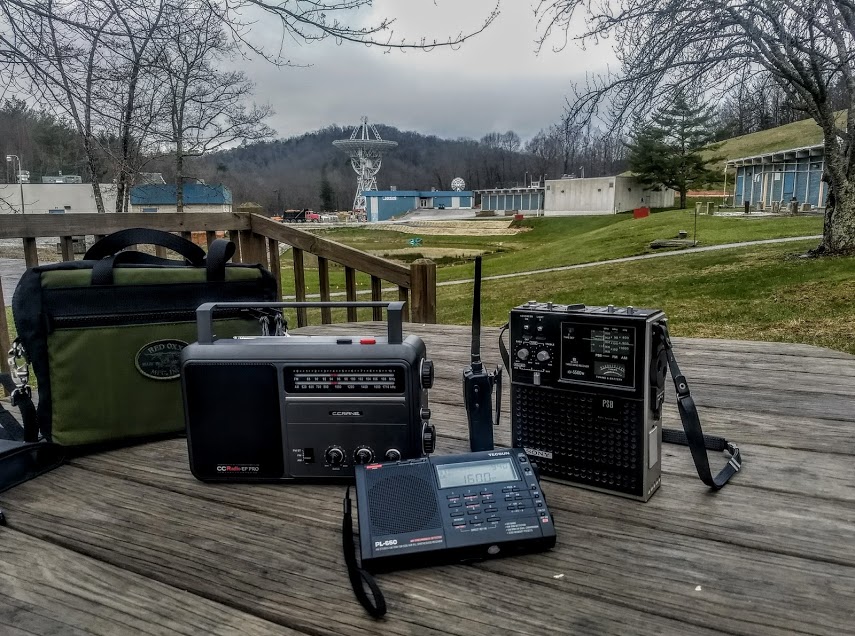
Comparing the CCRadio-EP Pro (left) with the Sony ICF-5500W (right) and the Tecsun PL-660 (middle) at the Pisgah Astronomical Research Institute.
The CCRadio-EP Pro is quite sensitive on the AM broadcast band. When I’ve compared it with a number of shortwave portables I own, it almost always outperforms them on frequency. When my Tecsun PL-660––one of the most sensitive mediumwave receivers among my shortwave portables––is tuned to a marginal signal, it sounds about half as sensitive as the CCRadio-EP Pro.
Check out the following comparison videos:
Click here to view on YouTube.
Click here to view on YouTube.
Click here to view on YouTube.
Click here to view on YouTube.
The noise floor is fairly low while the audio is robust and room-filling via the EP Pro’s front-facing speaker.
Positive: No drifting
As I’ve said above, unlike the original (analog) CCRadio-EP, the EP Pro is a mechanically-tuned DSP radio. In all of my testing, I never noted a time that the radio drifted off frequency.
Positive: Nulling
Crane’s internal Twin Coil Ferrite AM antenna affords the listener excellent gain and nulling capabilities. In fact, I find the nulling quite sharp, a major positive for this listener.
Positive: Fine tuning control
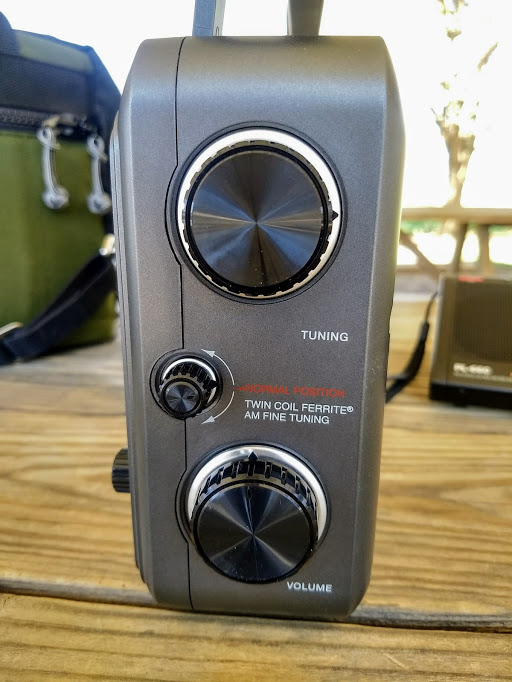
On the right side of the CCRadio-EP Pro you’ll find a large tuning knob (top), the antenna trimmer (middle), and large volume knob (bottom)
Like the original EP, the EP Pro has a Twin Coil Antenna Fine Tuning adjustment.
This feature can help make small adjustments to received station to peak reception. This fine tune control is actually trimming the twin coil ferrite bar.
Positive: Wide/Narrow filter
The EP Pro does have a Wide/Narrow filter selection which essentially helps widen or narrow received audio. Note that this has no meaningful impact on the imaging mentioned below.
Altogether, this about sums up the CCR-EP’s positive performance capabilities on the AM broadcast band.
Now let’s look at the CCR-EP’s negatives, some of which are, unfortunately, significant.
Negative: Muting between frequencies
The original CCRadio-EP revives the joy of a purely analog radio set. When you tune up/down the bands, there’s a fluidity to the whole process. While the interface is simple, analog tuning allows your ears to pick up on the nuances––the rise and fall of stations both strong and weak as you travel across the dial.
As we mentioned earlier, mechanically-tuned DSP radios, like the new CCRadio-EP Pro, may look like analog sets, but inside, they’re entirely digital. And one drawback to all of the mechanically-tuned DSP radios I’ve tested so far is a tendency to mute between frequencies. With each 10 kHz frequency step, you’ll hear a short audio mute. If you tune across the dial quickly, audio mutes until you land on a frequency. Here’s a video demonstrating the effect:
Click here to view on YouTube.
Needless to say, muting makes band scanning a more fatiguing process. It’s really a shame this affects the AM band. I hope that C. Crane engineers can minimize this issue in future production runs, but I understand much of this is a characteristic/limitation of this particular DSP chip.
Negative: Images/Selectivity
Crane actually includes a note about weak images which you might find below and/or above your target signal. Weak images are an unfortunate reality of the CCRadio-EP Pro; they’re prevalent on both AM and FM.
Here’s how you’ll experience the images by way of example: let’s say you’re tuning to a strong local AM station on 630 kHz, noting that the EP Pro has 10 kHz tuning increments. As you tune to 630 kHz, you’ll hear the station on 620 kHz, though it won’t be as strong as it is on 630 kHz. Then if you tune to 640 kHz, you’ll likely hear a weaker image of the station there, as well. In my experience, images are present on both sides of the target station if the station is strong. If it’s a weak station, you might only hear it, say, 10 kHz lower but not above (or vise versa).
As you might imagine, this poses a problem for the weak signal AM broadcast band DXer. Let’s say you’re trying to snag an elusive DX station on 640 kHz; although the EP Pro might have the sensitivity required to grab that station, it’s simply not selective enough (if selective is indeed the right word) to reject the local station on 630 kHz, thus your weak DX will have local competition.
This, more than any other negative, takes the EP Pro out of the realm of the mediumwave DXer.
Negative: Inaccurate dial
I’ve also discovered that, on my unit, the top half of the AM dial is inaccurate. I estimate that the slide rule dial is off by about 40-50 kHz at the top end of the band. It’s much more accurate below 1,200 kHz, however.
Here is a few photo of the CCRadio-EP Pro tuned to 1600 kHz:
I hope C. Crane can address this in future iterations of the EP Pro. While I don’t expect slide rule dials to be extremely accurate, there nonetheless needs to be some reliability.
Note: C. Crane engineering is aware of this problem and even attempting to implement a fix on the first production run units. I will follow up when I learn more.
Negative Audio “pop” with power on
As you might have heard in the band scanning video above, any time you turn on the CCRadio-EP Pro, you’ll hear an audio “pop.” This is happening when power is applied to the audio amplifier. The pop is not soft, but fairly audible, and is present even if you turn the volume down all the way. The audio pop is prevalent via both the internal speaker and when using headphones. Fortunately, it’s much less pronounced via headphones. While not a major negative, I find it a bit annoying, and don’t doubt that other listeners will, too.
Note: C. Crane engineering tell me that they’ve minimized the audio pop since making the limited first production run, thus the first full production run should be improved.
Negative: AM frequency steps currently limited to 10 kHz
My initial production run EP Pro is limited to 10 kHz frequency steps. This radio is primarily marketed to North America where 10 kHz increments are standard. Of course, if you’re trying to use the EP Pro to snag Transatlantic or Transpacific DX, you’ll miss the ability to tune between those broad 10 kHz steps. But, again, due to the imaging mention above, I think the CCRadio-EP Pro is simply not suited for DXing.
Note: C. Crane engineering has informed me that future production runs of the CCRadio-EP Pro may have a 10/9 kHz switch, thus eliminating this negative. If you’re reading this review a few months after time of posting––crossed fingers––this may already be resolved.
FM Performance
If you’re looking for a simple AM/FM radio, and plan to spend most of your time on the FM band, you’ll like the CCRadio-EP Pro.
Positive: Audio
FM audio is very good on the CCRadio-EP Pro. I think it would be safe to say that it’s superior to most other receivers currently on the market in its $85 price range. Audio is room-filling and has good characteristics with dedicated adjustments for Bass and Treble. FM audio is reminiscent of 1970s-era solid-state receivers like the GE Superadio (a big positive, in my book). The bass is not very deep and resonant, nor the treble super-crisp, but the sound overall is very pleasant to the ear.
Positive: Sensitivity
The EP Pro is a sensitive FM receiver. It received all of my benchmark local and distant FM stations.
Positive: No drifting
As with AM, the EP Pro does not drift off frequency (again, this is actually a DSP radio).
The FM band is less affected by some of the negatives that impact AM broadcast band listening:
Negative: Inaccurate dial
As with the AM dial, FM frequency markings are slightly off. I measured the entire FM band and found that the upper half of the dial (above 102 MHz) seemed to deviate the most. See images below comparing the Tecsun PL-660 and CCRadio-EP Pro tuned to the same FM frequencies:
Here are a few examples of the CCRadio-EP Pro and Tecsun PL-660 tuned to the same frequencies:
Note: As mentioned above, C. Crane is trying to implement a fix for this in future production runs.
Negative: Imaging
As with the AM band, you will find imaging on the FM band. This bothers me less on the FM band, but I live in an area where the FM dial isn’t incredibly crowded. If you live in an urban market with stations packed into the dial, then the imaging concern will probably make the experience of listening to a weak station adjacent to a strong station quite unpleasant.
What about muting between frequencies? While you can hear frequency steps on the FM band, there is little to no muting between frequencies. It almost feels more like an analog radio.
Click here to view on YouTube.
Funny, but the weak signal images around a strong FM frequency actually help contribute to an analog-like experience during band scanning, as stations seem to rise and fall as you tune.
There is another factor that I don’t really consider a positive, but is worth noting. The EP Pro is one of the best mechanically-tuned DSP receivers to use on the FM band because the slide rule dial is wide––there’s a larger space for the needle to travel. FM band scanning would be a pretty pleasant experience if only the dial markings were more accurate.
Summary
Every radio has its pros and cons. When I begin a review of a radio, I take notes from the very beginning so that I don’t forget some of my initial impressions. Here is the list I formed over the time I’ve spent evaluating the C. Crane CCRadio-EP Pro.
Pros:
- Excellent AM sensitivity
- Good audio via internal speaker
- Internal Twin Coil Ferrite AM antenna provides excellent gain and nulling
- Excellent dial backlighting
- External AM/FM antenna connections
- Quiet (included) power supply
- Low noise floor
- Dial backlighting
Cons:
- Imagining on both AM and FM
- Muting between frequencies on AM
- Pop in audio when unit is turned on, regardless of default volume level
- Dial markings inaccurate
- AM frequency steps currently fixed too broadly at 10 kHz (though future units may have a 9/10 kHz toggle)
Conclusion
My conclusion is that the CCradio-EP Pro is simply not an enthusiasts’ radio.
If you read the list of negatives in the AM performance section of this review, you’ll know why I simply can’t recommend it…at least not yet. If C. Crane could minimize AM muting, improve imaging and fix the frequency accuracy, this radio may prove more promising. But at this point, the limited production run CCRadio-EP Pro lacks the level of refinement that I’ve come to expect from a C. Crane radio.
For what it’s worth, I have been in close contact with C. Crane regarding these issues; the company is taking them to heart and even looking to implement some fixes/adjustments prior to their full production run. As these issues are resolved, I’ll amend this review.
The lack of refinements is somewhat disheartening. Otherwise, the CCR-EP Pro would be a great mediumwave DXing machine. When on frequency, it’s quite sensitive and stable! Perhaps some mediumwave DXers could overlook the negatives above to take advantage of this. I would not, however. I’d soon find the problems frustrating and turn to other receivers in my arsenal. Sensitivity is important, but personally I would sacrifice sensitivity to have an overall better tuning and listening experience.
On the other hand––as C.Crane makes a point of stating––the CC-Radio EP Pro was designed around the needs of Bob Crane’s mother: so is essentially an effective radio for casual listening that’s utterly simple to use. In this respect, at least, the EP Pro is a success.
The EP Pro has no multi-function buttons, no menus, and no memories. The knobs and buttons are tactile and obvious. The backlit dial is also a nice touch; I love it. The EP Pro is old school design around a modern DSP chip and, in terms of audio, a hat tip to classic solid state analog radios from the 1970s and 80s.
The casual listener––especially those who use radio to primarily listen to their one favorite station––will enjoy the EP Pro. For example, I have an older friend who’s in the process of replacing his bedside radio of 30+ years. He wants a set he can tune to his staple AM broadcast station (which is not a super-easy catch) and leave it on frequency––essentially, he wants a “set it and forget it” radio. I think the EP Pro will work well for this application.
But for radio enthusiasts––like most of you wonderful people who read the SWLing Post––I would pass on the EP Pro and consider a more capable mediumwave radio instead like the original CCRadio-EP, the CC-Radio 2E, or a vintage solid state set like the GE Superadio, Sony-5500W, or the venerable Panasonic RF-2200.
Click here to view the CCRadio-EP Pro at C. Crane Company.
from topfeedremix https://ift.tt/2qyCrlU
via IFTTT



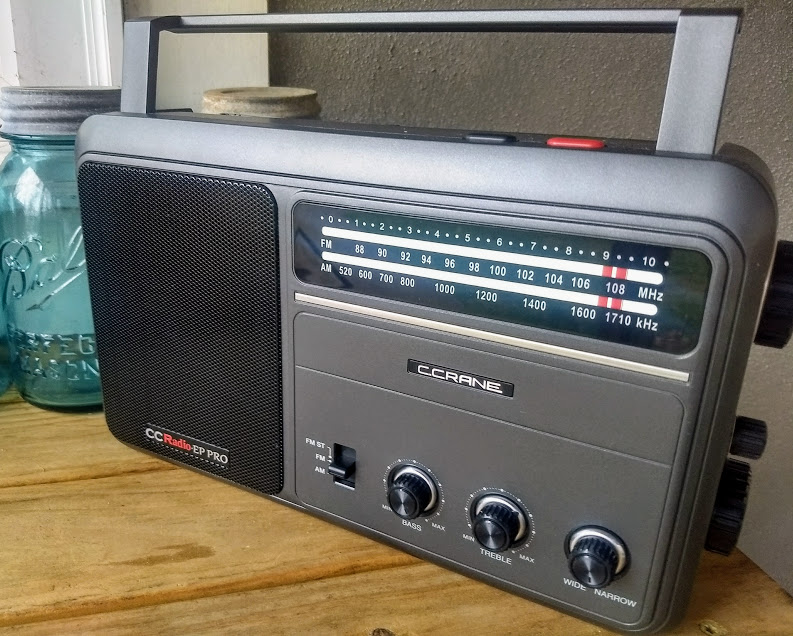
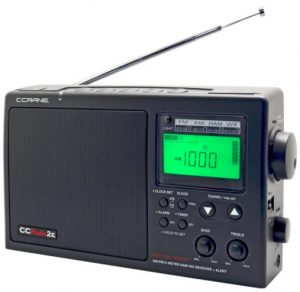
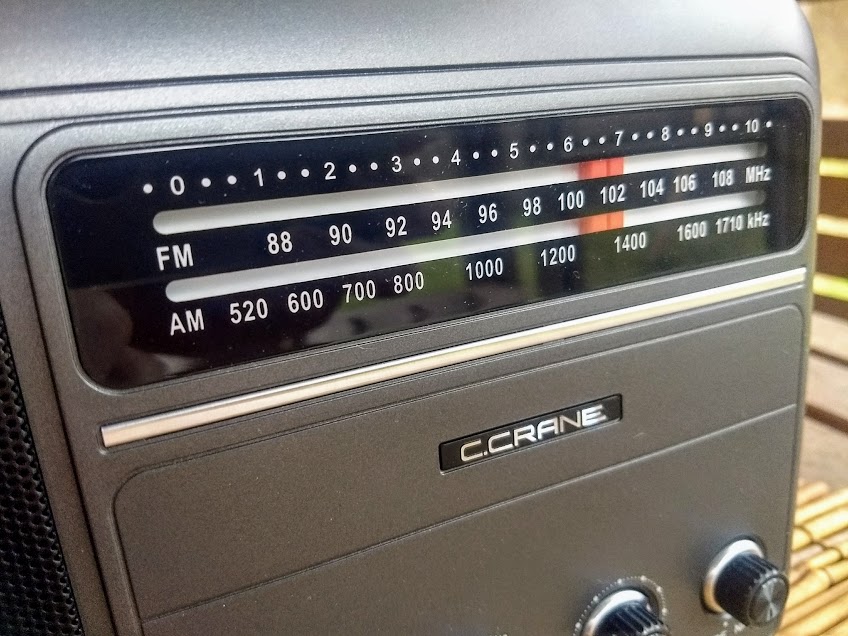
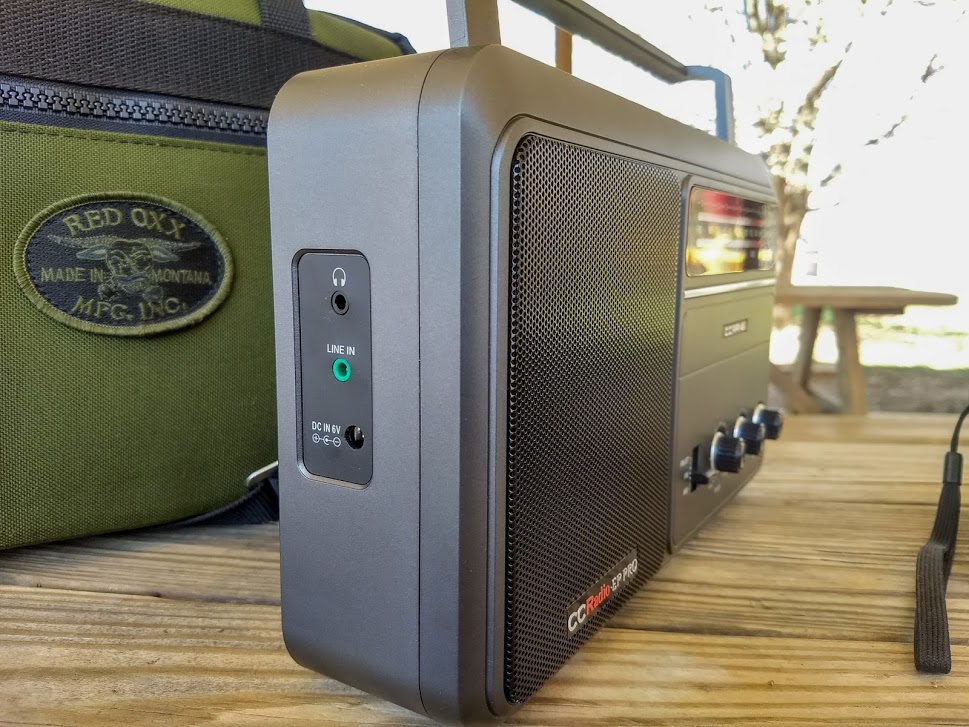

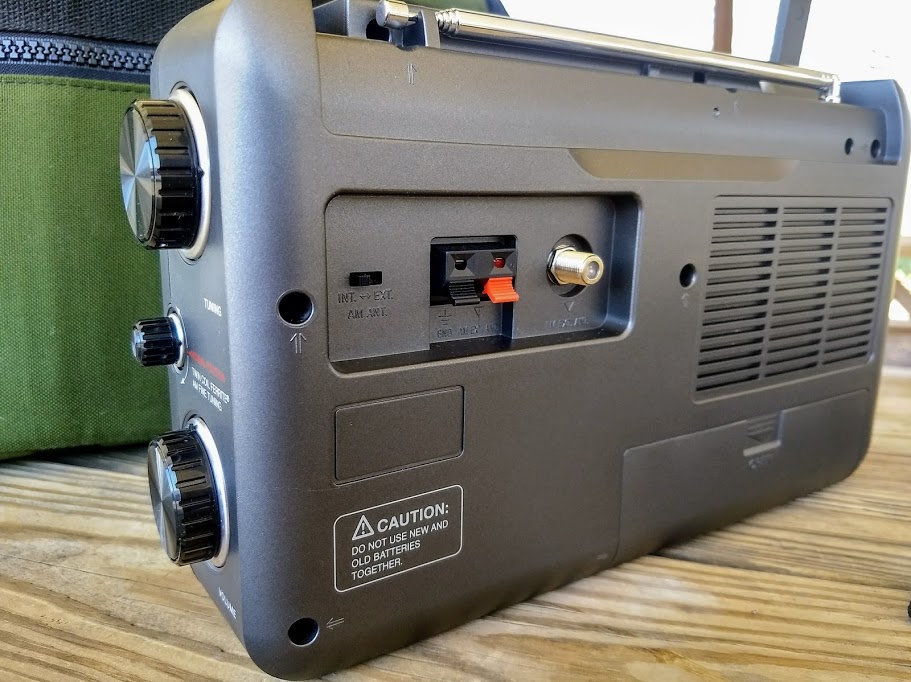
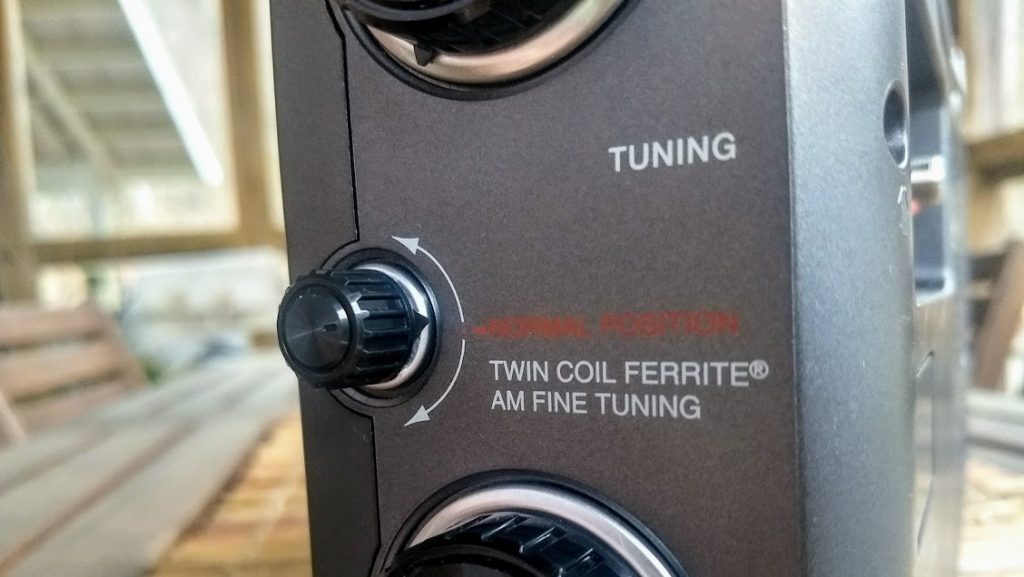
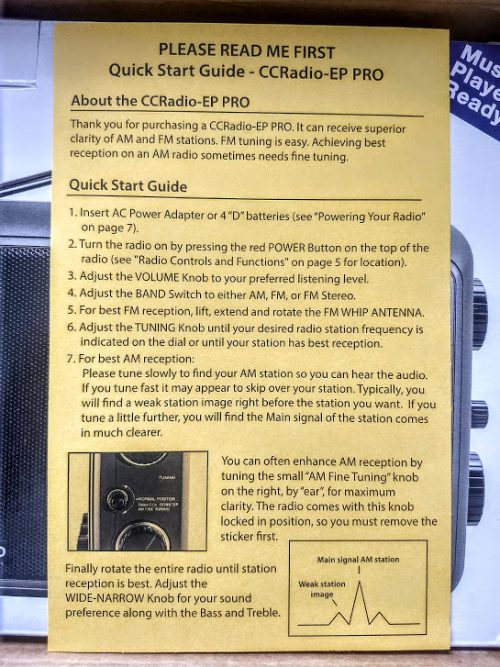
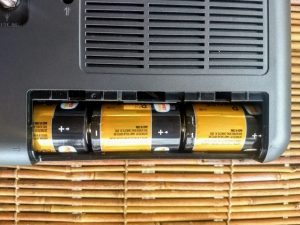
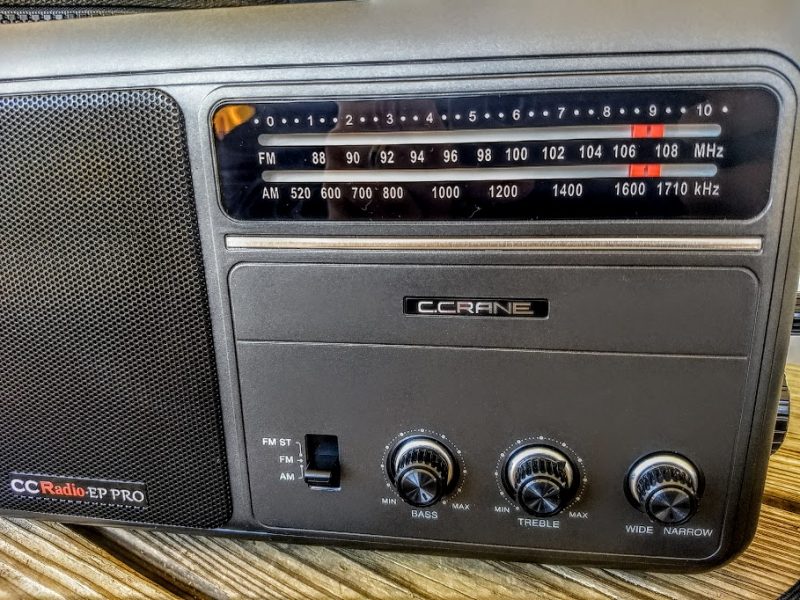
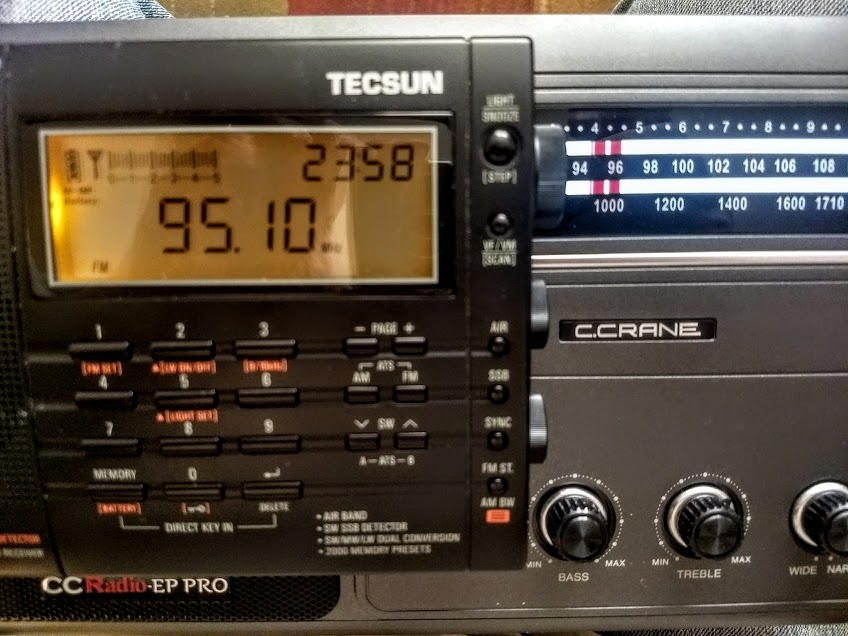
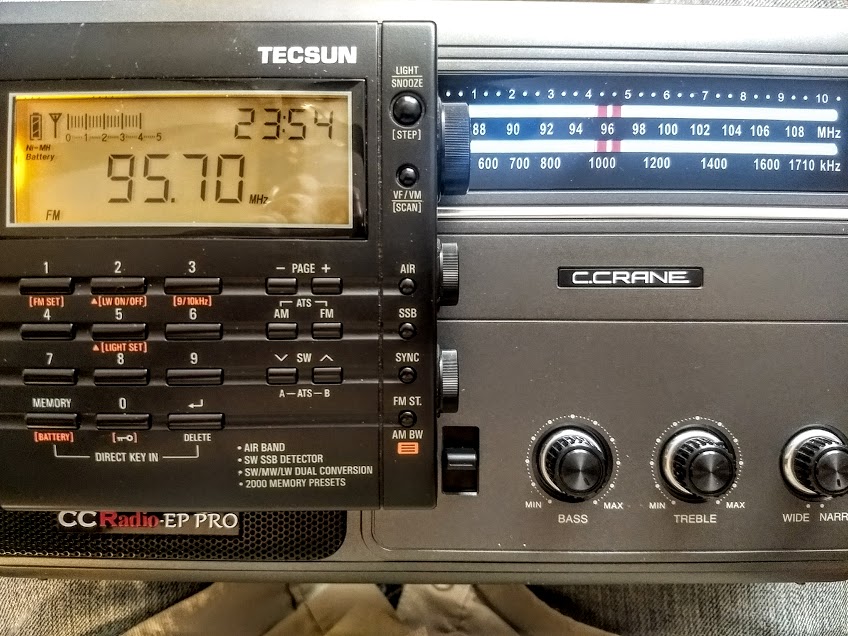
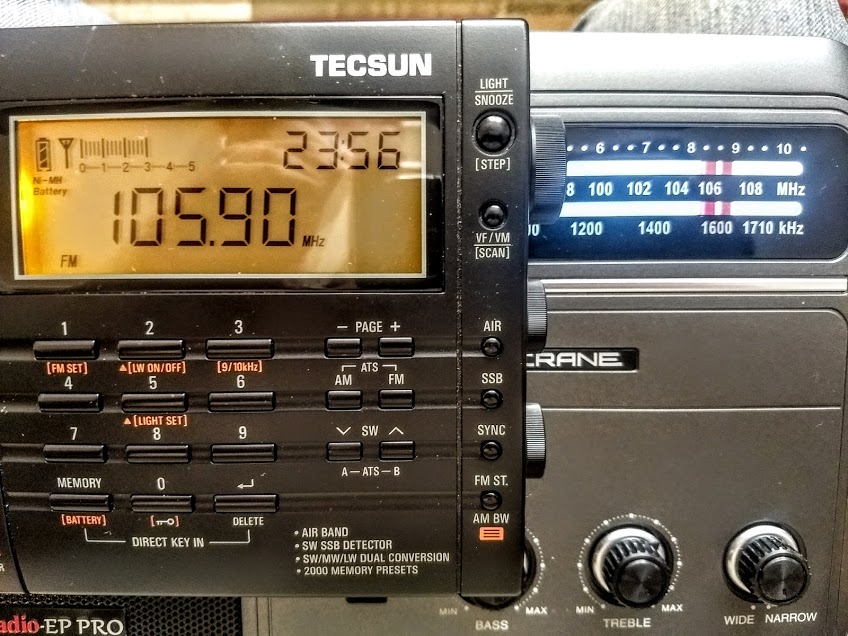
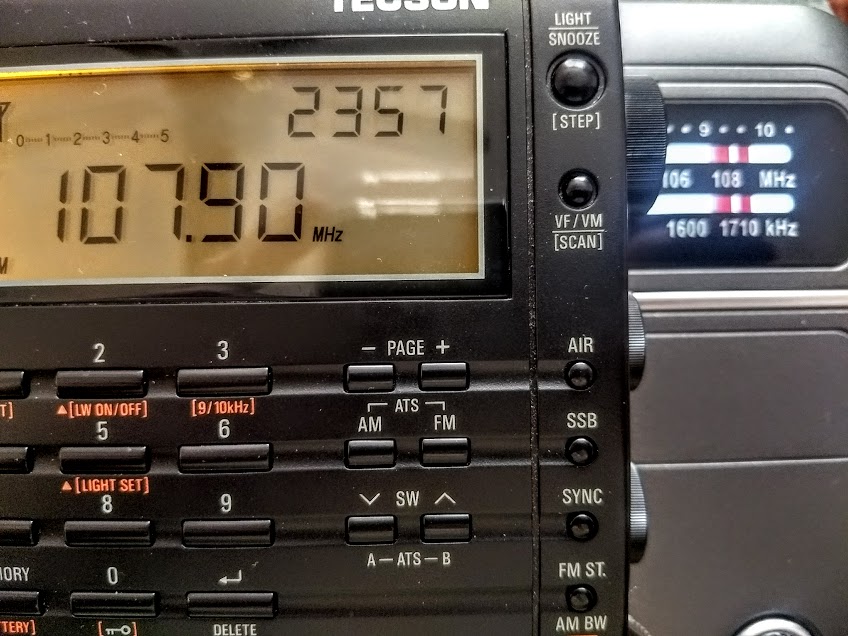
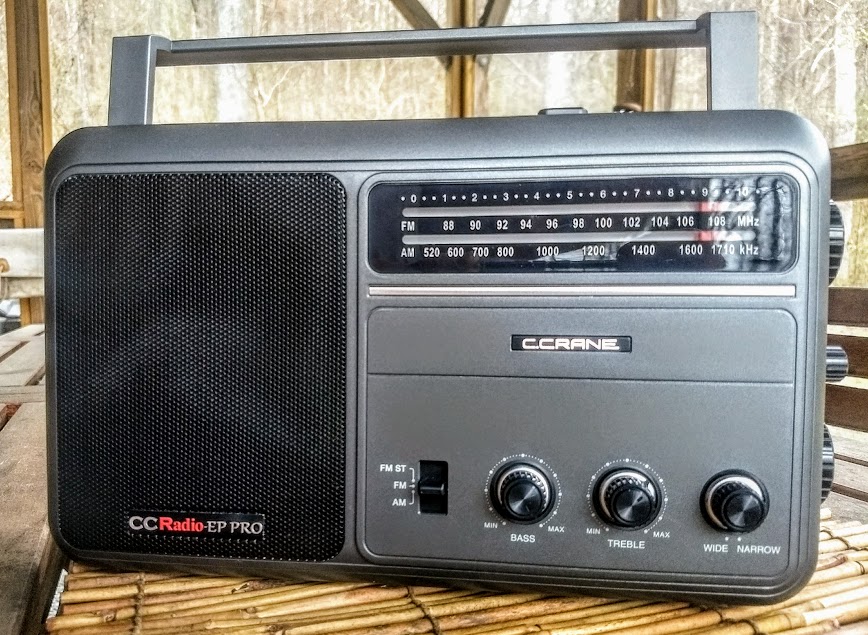
No comments:
Post a Comment